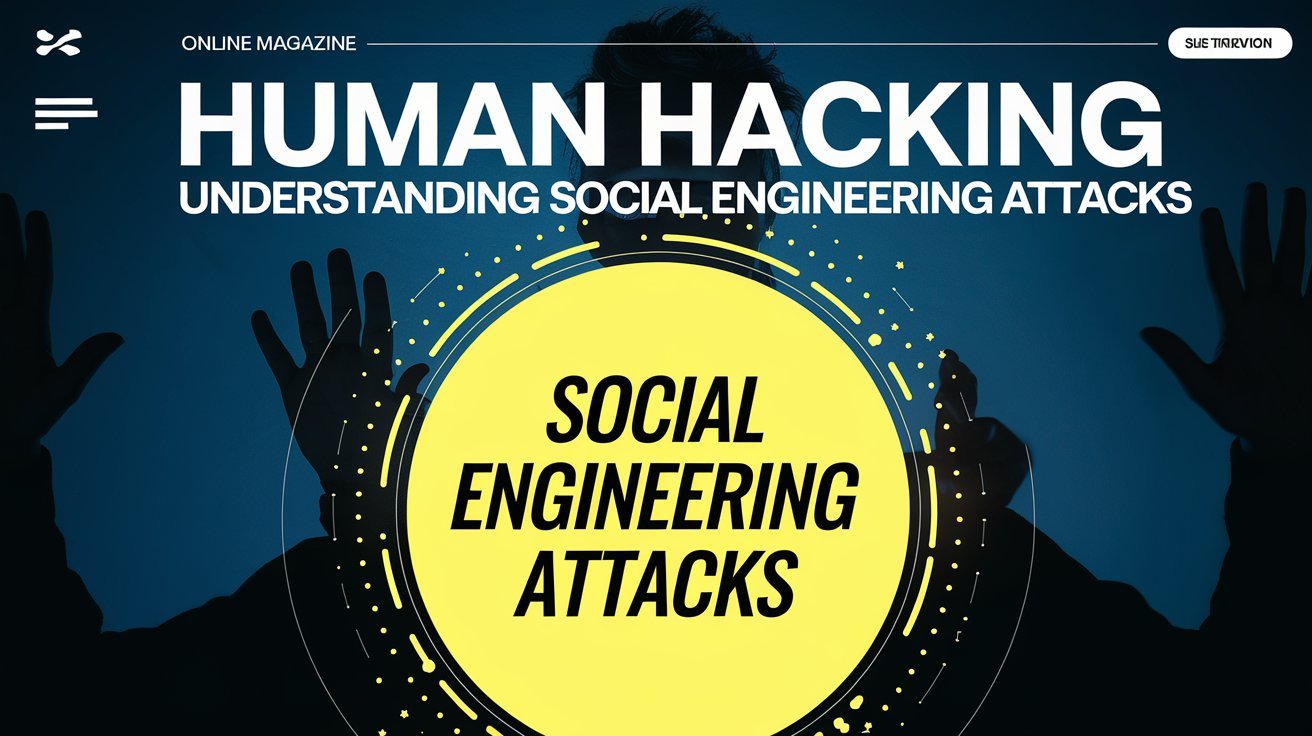Introduction
Within the dynamically changing cybersecurity landscape, social engineering has turned into one of the most powerful threats that focuses precisely on human psychology, not technology, with the purpose of manipulating somebody’s vulnerability. Thus, these attacks are based on the manipulation of human behavior by threatening unauthorized exposition to sensitive data, thus posing a serious threat to both organizations and individuals.
Nowadays, the bad guys have turned to attacks against the human link by using different scheming techniques: phishing, baiting, impersonation, and quid pro quo. This article looks at how social engineering attacks work, their impact on businesses and individuals, and what is required by way of a multilayered approach to defense.
The Mechanics of Social Engineering Attacks
Social engineering attacks are variations of manipulations of a person’s confidence, curiosity, or-what happens quite often-the feeling of urgency. In contrast with traditional hacking, based on technical means of compromising the system, social engineering does without digital protection by means of targeting people.
1. Phishing
Accounting for an estimated 90% of global data breaches, phishing is the most common form of social engineering. An attacker impersonates a legitimate entity, using electronic contact-most commonly email, but also by phone and social media-to fool an individual into revealing sensitive information. There are several forms of phishing, including:
Spear phishing: involves highly targeted phishing, where attackers often use personal details of the target to gain credibility.
Whaling: It aims at high-value targets; usually, executives are targeted for information regarding the corporation or its financial information.
The attackers have gotten very sophisticated, using real branding these days, even down to names that best assure the victim that the messages are real.
2. Baiting
Baiting involves curiosity, where some promise lures the victim into either clicking on a malicious link, downloading something, or even some sort of physical device. The best-known, almost classical form of baiting is leaving a USB stick in a common area; once plugged into a computer, malware is installed. The same sort of scenario can occur electronically with an enticing offer or “urgency,” which can also use a download to pull off the same thing.
3. Impersonation (Pretexting)
Impersonation, in general, is a type of attack in which an attacker devises a scenario for the purpose of capturing information or gaining access to something. It can be impersonation of any form: a business representative, IT support, or a colleague. By using information that sounds valid, such as the name of a colleague or some known company title, attackers gain trust in a very short time and can thus easily manipulate their targets.
4. Quid Pro Quo
Quid pro quo attacks are those in which the attacker offers something as a service or good in exchange for sensitive data or access. They’d impersonate IT, call a person for “assistance,” and ask for their login information. This relies on the principle of reciprocity, whereby the target feels bound by returning something after something seemingly good has been done to them.
How Social Engineering Affects an Organization
These are the effects of attacks caused through social engineering. Most of the time, these types of attacks lead to huge financial losses, data breaches, loss of prestige, and regulatory actions against them. In one of the major cases, the 2013 Target data breach, attackers utilized social engineering to gain access to vendor credentials, which allowed 41 million customer accounts to be compromised, with over $162 million in damages.
Social engineering attacks also have very long-lasting effects on brand trust and consumer confidence. While data breaches expose an organization to possible lawsuits and regulatory fines, these effects are usually more long-term and involve loss of consumer trust. Thirdly, social engineering manipulates human psychology in ways that technical controls can barely defend against, thereby making the human factor a most critical point of vulnerability when it comes to cybersecurity.
How to defend against social engineering The full defense against the social engineering attack requires a combination of employee training, firm verification protocols, technological safeguards, and safety culture. Some mitigation strategies necessary in this regard include the following:.
1. Training and Awareness among Employees
Continuous Education: Regular training in cybersecurity helps staff to identify phishing emails, suspicious requests, and other precursors indicating social engineering attacks. The training provided on this usually contains mock phishing attacks to enhance awareness and increase the ability to identify it.
Response Protocols: Training on response protocols in the case of a potential attack will help. Individuals should be empowered to ask questions when requests are out of the ordinary and know the right ways to escalate a suspected phishing incident.
2. Verification Protocols with Multi-Factor Authentication
Verification Process: Every setup needs some process of verification of requests, especially in very sensitive transactions or access. For instance, employees can be trained on the verification process for requests of confidential information by directly calling the requestor through official lines.
MFA would be regarded as one of the best layers of security that have introduced identification requirements, which would probably be your fingerprint or a one-time password. It ensures that even if credentials get compromised, unauthorized entry shall not take place.
3. Security Technologies Deployment
AI-Driven Security Tools: Advanced AI is able to identify patterns and URLs to detect and prevent phishing attempts. This system is very important, especially in big organizations, where all the e-mails can be scanned by such systems that flag anything that looks like a phishing attempt.
Endpoint Detection and Response: The endpoint security software identifies the suspicious behaviors of unfamiliar login locations and high-risk activities, and it gives real-time alerts to security teams in case of attempts at social engineering attacks.
4. Creating a Security-Conscious Culture Encouraging Vigilance:
This is a culture that does not punish but rewards the reporting of suspicious behaviors. Many organizations already use a “zero-trust” model that encourages validation of every request, even if it is coming from a trusted-seeming source. The organizations that reward watchfulness by recognizing those employees who report such phishing attacks reinforce positive culture in cybersecurity.
5. Periodic Audit and Penetration Testing Security Audits:
Regular audits assist organizations in identifying existing weaknesses in themselves and the strength of their defenses against social engineering. Penetration Testing: Ethical hacking or penetration testing simulates attacks, revealing weaknesses that attackers could exploit. By identifying and addressing these areas, organizations can stay ahead of potential threats and improve their defense systems.
Conclusion
Social engineering attacks are not going anywhere, mainly because they effectively exploit human psychology, which, as compared to the digital systems, is way trickier to lock down. This requires proactive approaches in cybersecurity: technical defenses underpinned by employee training, strong verification processes, modern technology, and a security-conscious culture. This will combine properly with good security practices to protect against sophisticated human hacking, either in a business setting or for an individual. A security-oriented culture and multilayered defense system will go a long way to assist an organization in safeguarding its people and data against social engineering threats that are ever-evolving.
Published by CybaPlug.net: Your ultimate destination for tech news, gaming insights, and digital innovations.
Stay plugged in!
Hi I'm Olly, Co-Founder and Author of CybaPlug.net.
I love all things tech but also have many other interests such as
Cricket, Business, Sports, Astronomy and Travel.
Any Questions? I would love to hear them from you.
Thanks for visiting CybaPlug.net!






